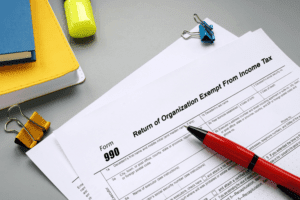- Wednesday December 1, 2021
Debt Ratio Definition, Components, Formula, Types, Pros & Cons

If the majority of your assets have been funded by creditors in the form of loans, the company is considered highly leveraged. In turn, if the majority of assets are owned by shareholders, the company is considered less leveraged and more financially stable. The debt-to-asset ratio is considered a leverage ratio, measuring the overall debt of a business, and then comparing that debt with the assets or equity of the company. Understanding a company’s debt profile is one of the critical aspects of determining its financial health.
How Do You Calculate the Debt Ratio?

He currently researches and teaches economic sociology and the social studies of finance at the Hebrew University in Jerusalem. Log out of your current logged-in account and log in again using your ET Prime credentials to enjoy all member benefits. The defendants don’t need to have a written or oral agreement to establish a price-fixing conspiracy. Rather, the evidence must show that they intended to set their prices together to increase profits.2. The evidence only indicates pure conscious price parallelism by the defendant. 3.2 First differencing helps to eliminate the fixed or unobserved effects.

• Working capital
This means that the value of a company’s assets is 1.5 to 3 times the amount of its current liabilities. Current assets are all the assets listed on a company’s balance sheet expected to be converted into cash, used, or exhausted within an operating cycle lasting one year. Current assets include cash and cash equivalents, marketable securities, inventory, accounts receivable, and prepaid expenses. On the other hand, a company with a current ratio greater than 1 will likely pay off its current liabilities since it has no short-term liquidity concerns. An excessively high current ratio, above 3, could indicate that the company can pay its existing debts three times.
Shakti Pumps Reports Impressive Financial Results for Q1 FY25, Shows Strong Sales Trend and Profit Growth
Ratio analysis can predict a company’s future performance—for better or worse. When a company generally boasts solid ratios in all areas, any sudden hint of weakness in one area may spark a significant stock sell-off. Ratios are comparison points for companies and are not generally used in isolation. Instead, they are compared either to past ratios for the same company or to the same ratio from other companies.
- Before handing over any money to fund a company or individual, lenders calculate their debt to asset ratio to determine their overall financial profile and capacity to repay any credit given to them.
- If interest rates are higher when the long-term debt comes due and needs to be refinanced, then interest expense will rise.
- Every figure needed to calculate the ratios used in ratio analysis is found on a company’s financial statements.
- The current ratio may not be particularly helpful in evaluating companies across different industries, but it might be a more effective tool in analyzing businesses within the same industry.
- Too little debt and a company may not be utilizing debt in a healthy way to grow its business.
The current ratio has several limitations that could cause it to be misinterpreted. It is crucial to keep this in mind when using the current ratio for investment decisions. As noted earlier, variations in asset composition can cause the current ratio to be misleading.
Unfortunately, the financial standing of Lucky Charms seems to be progressively getting worse. A ratio is the relation between two amounts showing the number of times one value contains or is contained within the other. Third-party loan provider information is https://www.bookstime.com/ not available to residents of Connecticut or where otherwise prohibited. Any opinions, analyses, reviews or recommendations expressed here are those of the author’s alone, and have not been reviewed, approved or otherwise endorsed by any financial institution.
Company A: XYZ Corporation
Thus, lenders and creditors will charge a higher interest rate on the company’s loans in order to compensate for this increase in risk. At the very least, a company with a high amount of debt may have difficulty paying or maintaining dividend payments for investors. The purpose of calculating the debt ratio of a company is to give investors an idea of the company’s financial situation. Because of this, what is considered to be an acceptable debt ratio by investors may depend on the industry of the company in which they are investing. A low debt ratio, typically less than 0.5 or 50%, indicates that a company relies more on equity than on borrowed funds to finance its assets.

Current liabilities
- Investors and lenders calculate the debt ratio of a company from its financial statements.
- Highly leveraged companies may be putting themselves at risk of insolvency or bankruptcy depending upon the type of company and industry.
- The debt ratio is the ratio of a company’s debts to its assets, arrived at by dividing the sum of all its liabilities by the sum of all its assets.
- Ratio analysis can help investors understand a company’s current performance and likely future growth.
- The purpose of calculating the debt ratio of a company is to give investors an idea of the company’s financial situation.
A company’s total debt-to-total assets ratio is specific to that company’s size, industry, sector, and capitalization strategy. For example, start-up tech companies are often more reliant on private investors and will have lower total debt-to-total-asset calculations. debt to asset ratio However, more secure, stable companies may find it easier to secure loans from banks and have higher ratios. In general, a ratio around 0.3 to 0.6 is where many investors will feel comfortable, though a company’s specific situation may yield different results.
Including preferred stock in total debt will increase the D/E ratio and make a company look riskier. Including preferred stock in the equity portion of the D/E ratio will increase the denominator and lower the ratio. This is a particularly thorny issue in analyzing industries notably reliant on preferred stock financing, such as real estate investment trusts (REITs). A year-over-year decrease in a company’s long-term debt-to-total-assets ratio may suggest that it is becoming progressively less dependent on debt to grow its business. Although a ratio result that is considered indicative of a “healthy” company varies by industry, generally speaking, a ratio result of less than 0.5 is considered good.
A high debt to assets ratio, typically above 50%, indicates a greater reliance on borrowed funds to finance the company’s assets. While this may indicate higher financial risk, it can also signal that the company is leveraging debt effectively to generate growth and increase shareholder value. It is important to consider industry benchmarks and the company’s specific circumstances when interpreting a high ratio. The debt to assets ratio does not take into account the market value of assets, as it relies on historical cost accounting. Therefore, it may not accurately reflect the actual value of a company’s assets or its ability to generate future cash flows.
